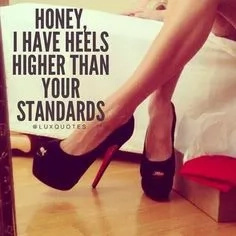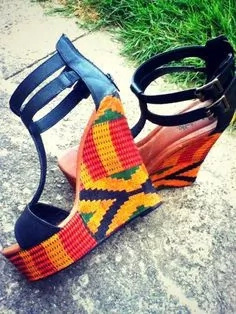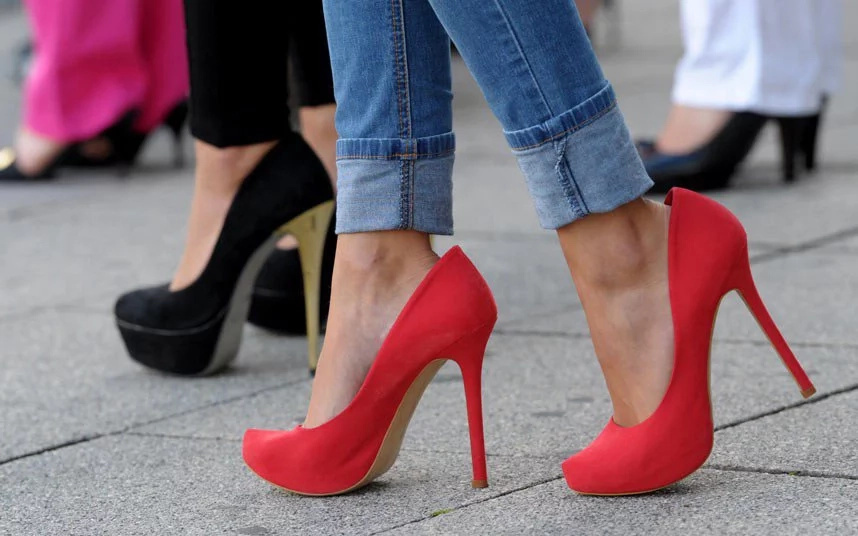Unlike Sex And The City ‘s Carrie Bradshaw – who chased her friends, men, taxis, and sometimes a dog in the park while teetering on four-inch stilettos – a high-heeled life in the real world is just not practical.
Problems range from common concerns like achy ankles, painful toes, masculine calves (masguembe), bunions, corns and calluses to more complex issues like ingrowing toe nails, or spine issues.
We know that you love your heels so we are not even trying to suggest that you ditch them for some ‘classless’ flats or sneakers all day ‘eer-day’. But we searched some good solutions and precautions for you:
Choose sensible heels. Research indicates that anything above two inches is dangerous especially if worn too much. Select shoes with low heels and a wide heel base; a slightly thicker heel will spread the load more evenly.

Wedge heels, even when taller than two inches, have a larger surface area hence more support and stability for the foot, as opposed to narrow, stiletto-type heels that provide little support.

Avoid high heels that cause your feet to slide to the front as this creates more pressure on the toes. Instead, get fitting ones, but also not too narrow to cause toe injury. Take your time when trying shoes on in a store, walk around in the store to test a shoe’s comfort.
Again, when shopping, take the high heel test: stand on a flat floor in the shoes with your knees straight, but not locked. Try to raise yourself on your toes so there’s at least an inch of space under the heels. If this is not possible, your heels are too high and not appropriate for you.
Platform high heels that are reasonably high are a better option to regular high heels since with these, there’s less weight in the ball of the foot because it’s more evenly distributed throughout the foot.

Alternate your shoe choice throughout the day. Disregard all those disses against Nairobi women and ‘fornication bags’ that have so much in them. Always keep a pair of flats handy especially if you have to walk all the way from GPO to Bus Station to catch a mat! Wearing shoes that allow your body to move naturally during walking will allow your feet, legs, hips and back to stretch.
Speaking of alternating, remember to change your shoe choice from one day to the next. Don’t wear your high heels all day seven days a week!
Buy shoe padding available in many shoe stores for cushioning. This helps with pain in the ball of the foot.
Take time every day to stretch your calf muscles and feet by standing on the edge of a step with your shoes off or trying to pick a pencil up off the floor with your toes.
Wear a thicker heel for stability. This one gives you better balance as it distributes the weight on your foot more evenly.
You can also wear heels with ankle straps more often as the shoe stays on comfortably, so you don’t have to put in extra effort for balance.

Another good option is open-toe high heels that take pressure off inflamed areas such as corns and calluses.
Always remember to walk carefully. Walking in high heels means that the smallest of pebbles, pot holes, and uneven pavement can trip you up. Confidence is important, but overconfidence can be your undoing.
When walking, don’t try to keep the same stride length you use in your slippers and ‘ngomas’. The higher your heel, the shorter your step will be.

When you get back home, spend a few minutes giving yourself a foot massage as this helps loosen muscles. Get a pedicure done regularly as then you will have your feet professionally massaged.
Lastly, wear heels on days that require limited walking or standing. Most of the high-heels-related harm on your feet, knees and back comes from regular long-term use of walking in high heels.
Images: pinterest.com





